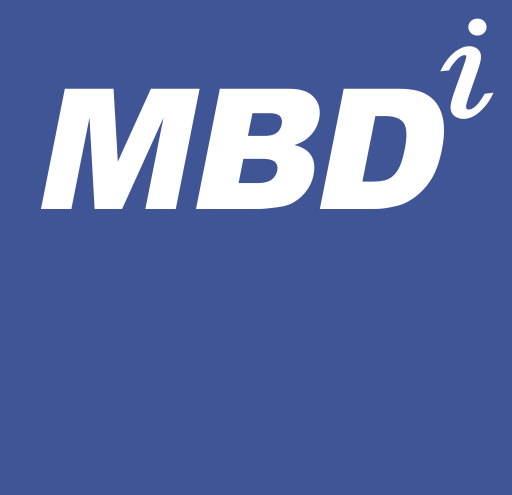Sell, Be Sold, or Be Gone
There’s a significant transition taking place with the small business community in the defense industry … with new rules for doing business, fewer opportunities and more competition. Emerging businesses are vulnerable in the current, changing environment. The near future doesn’t hold prospects for being better unless company leadership is willing to make changes in Business Development methodology in order to grow revenue.
Leaders in emerging businesses find themselves in a difficult, precarious situation. They need to pursue new and larger opportunities but lack the BD capability to procure business on their own from opportunity identification through capture. Some prefer to search for opportunities as they are “announced”, and subsequently invest time and personnel with limited budget resources to submit a proposal, seldom realizing they are way behind the curve in the business winning process.
To make matters worse, according to an insight shared by a client, at times more than one appropriate IDIQ “opportunity” is announced by an agency at the same time. This requires a small company to then stretch their proposal team’s resources beyond reasonable response limits, resulting in a dilution of effort across multiple RFPs with less than stellar output and lower probability of winning any of them.
If you find yourself in any of these situations, take an objective look at the Seven Deadly Sins of Small Business Development compiled from our experience working with firms in this industry, and decide to make the changes needed to position your company to grow revenue.
LACK OF EXECUTABLE BUSINESS DEVELOPMENT PLANS
Vulnerable companies utilize their initial business plan to reach existing levels of revenue, but never plan well for the next phase of growth. Not working through a planning process typically results in experiencing problems for which contingencies haven’t been considered. As a result, the firm is constantly in a reactive mode. To survive, a small business leader needs to plan and consciously make the decision to build a proactive BD organization with actionable and executable operational and tactical BD growth plans.
INCONSISTENT CUSTOMER ENGAGEMENT MODELS
Most small businesses begin using the seller/doer/farmer model for organic growth. But with this approach, they are only able to increase revenue by working longer hours. Some companies gravitate to a limiting traditional sales model. When that strategy doesn’t work out, they’re way behind in the timeline.
A very few organizations move directly to a consultative business approach favored by customers, since it values client input and provides for a win/win relationship. However, without implementing plans and processes to facilitate this complex model, they are constantly in a reactive mode, responding to whatever their customers’ plans and processes might be.
INADEQUATE BD PROCESSES
Most small business BD teams lack the ability to effectively call on customers. Without an efficient Opportunity Identification & Qualification Process (OI&Q)i specifically geared to their company and capabilities, there’s a gap in their Human Intelligence gathering needed to make prudent qualifying or disqualifying decisions early on. Without an efficient (OI&Q)i process to follow, most small businesses tend to cling to “opportunities” and submit proposals, even though they know they’re not positioned well enough with the decision makers.
Due to financial and emotional resources already invested, businesses often reactively produce “Hail Mary” proposals where nobody in the organization has even engaged with the customer beforehand.
UNABLE TO IDENTIFY, RECRUIT & HIRE BD STAFF
Small businesses either possess good BD personnel or they don’t. If they believe they have internal BD talent or have identified individuals with this potential, the tendency is to meld these individuals into a BD team with no idea whether they’ll “make the numbers” or not. Selecting and evaluating BD staff is a difficult proposition, particularly for non-BD people. Training and development are typically not part of a lean budget, so the BD team struggles on their own.
If you’re sourcing BD talent from the outside, you’ll run into more problems, since hiring managers often hear what they want to hear and fail to establish fact from fiction. Without assessment experience in sourcing BD talent, hiring managers discover that the hired individual’s BS factor is much greater than their BD ability.
POOR BD LEADERSHIP
In a small business, the strategic BD leader is often the owner and there also may be a tactical BD manager, and preferably both. However, most firms make the fateful mistake of promoting their best BD individual into the BD manager role. The vast majority of these individuals lack the skills and experience to perform in this capacity. Good, effective business developers prefer to be out in front of customers and prospects, working on the next deal. They are not well suited to the structure and discipline required to “herd cats” on the BD team. The net result of this situation is the loss of your best BD person, a frustrated manager and an ineffective BD organization.
NOT UNDERSTANDING THE CUSTOMER BUYING PROCESS
Many small business BD teams do not fully understand the customer buying process. They neither know who the decision makers are nor when a decision will be made. This is true when working with a client or a “Prime”. Not understanding this process leaves you at a great disadvantage. It makes you vulnerable to those companies that engage customers early on, develop relationships, obtain valuable input and help shape the requirements.
INCOMPLETE KNOWLEDGE OF CUSTOMER NEEDS
What drives the client to choose/prefer your small business over others? A lack of knowledge here is possibly the biggest mistake a small business can make. Trivializing client problems … assuming you know the problem without asking questions and listening … is that aspect where most small businesses fail miserably. Without a relevant dialog, they dismiss the information being provided and jump to providing their best solution. Not investing time to really understand client issues before presenting capabilities or potential solutions limits the effectiveness of your BD organization. This approach also positions your team as a group of traditional salespeople.
If you find that a few of these “Seven Deadly Sins ” ring true from your experience, find a Business Development consulting resource to help you deal with the gaps in your BD plans and capabilities. Unfortunately, revenue growth is not a given in the current economy. Whatever effort got you where you’re at now, may not get you where you need to go.
Learn to sell and grow, become a sub and be sold, or you’ll soon be gone.


